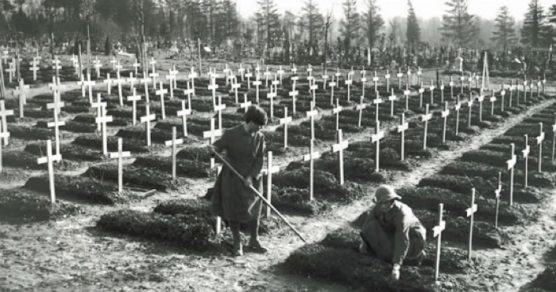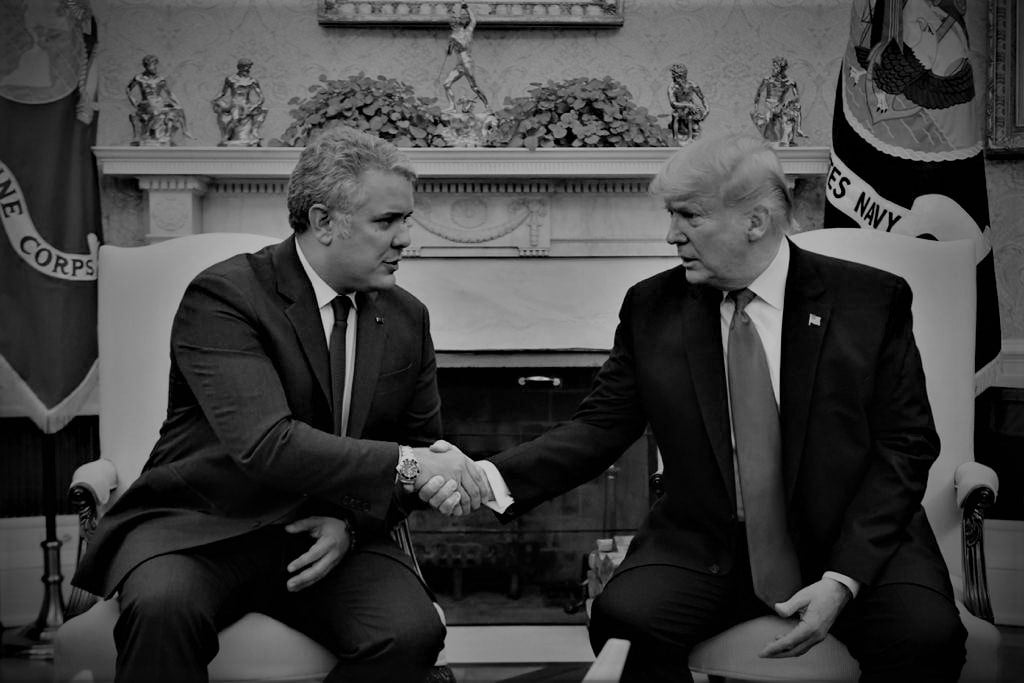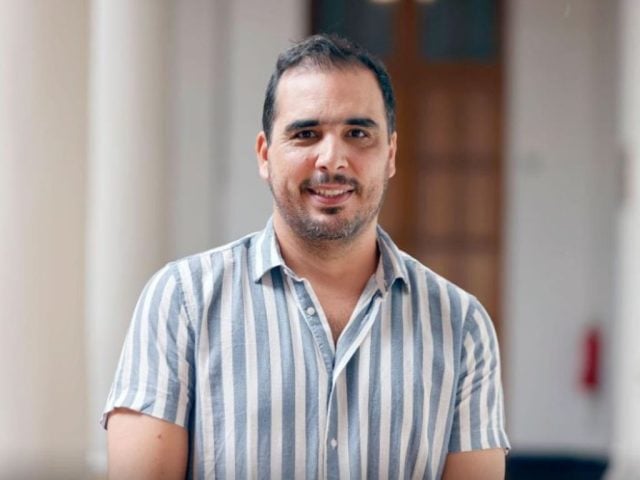A little over a century ago, humanity faced a deadly pandemic, the 1918 Flu, during which governments made mistakes that unfortunately have been repeated in the current health crisis caused by COVID-19.
The unfairly known as «Spanish Flu», affected a third of the 1.5 billion inhabitants of the planet at the time. Although there are no exact figures, current studies place the number of deaths caused by the pandemic between 40 and 50 million, or even up to 100 million.
For this reason, it can be said that in less than two years the disease killed more people than the two world wars combined.
The truth is that it left millions of victims such as the pandemics of the black plague, which between 1347 and 1351 caused 200 million deaths, and smallpox, which in 1520 ended the lives of 56 million people.

Flu symptoms
Although censorship and lack of resources at the beginning of the 20th century prevented the characteristics of the deadly virus from being fully investigated, today it is known that it was caused by an outbreak of influenza virus A, subtype H1N1.
Unlike other viruses that basically affect children and the elderly, many of its victims were healthy young people and adults between 20 and 40 years old, an age group that was probably not exposed to the virus during childhood and, therefore, did not have natural immunity.
The strain killed its victims with unprecedented speed. In the United States, information abounded about people who got out of bed sick and died on the way to work.
The main symptoms developed by the patients included: high fever, earache, body fatigue, diarrhea and vomiting.
«The lack of oxygen caused a bluish tone on the face; the hemorrhages filled the lungs with blood and caused vomiting and nasal bleeding, so that the patients drowned with their own fluids», reported National Geographic.
Most of the people who died during the pandemic presented a picture of secondary bacterial pneumonia, which could not be properly treated since there were no antibiotics available.
«However, one group died rapidly after the first symptoms appeared, often with massive acute pulmonary hemorrhage or pulmonary edema, and frequently in less than five days», the Gaceta Médica (Medical Journal) portal reported.

Reconstruction of the virus
In the hundreds of autopsies performed in 1918, the primary pathological findings were limited to the respiratory system, so the results focused on respiratory failure, without evaluating the circulation of a virus through the body.
Different medical publications of the time tried to respond to the causes of the pandemic. However, rebuilding the virus took many years, and even decades.
The recovery of lung tissue from a victim buried in the frozen ground of Alaska, along with some preserved samples from US soldiers, allowed the genome to be sequenced and the virus even rebuilt in 2005, under strong security measures at the Center for Disease Control United States (CDC).
Experiments with the recreated virus confirmed its virulence: In infected mice it reproduced 39,000 times more than a normal flu.
Also, studies with monkeys revealed that it tended to trigger what is known as a «cytokine storm», a complication that appears due to an exaggerated immune response and that could explain the death in young people, with a more robust immune system.

The non-Spanish flu
Although the devastating pandemic that affected the world between 1918 and 1920 went down in history as the «Spanish Flu», none of the evidence handled by experts indicates that it originated in the European nation.
Before this flu reached Spain, it had previously caused many deaths in the United States and France. The detail was that the media in the countries that participated in World War I were under military censorship and concealed the pandemic.
In Spain, which was a neutral country during the war, the press reported on new cases of the pandemic, which was popularly known as «The Soldier of Naples», for a very catchy song that was sung in a fashionable zarzuela at that time. It was this that gave the feeling that it was the only country affected and that is why the disease became known in the world as «Spanish Flu».
«The disease did not originate in Spain, but since its press could report it, many people thought it was so, since other countries did not report their cases due to wartime censorship», historian Cédric Cotter explained to the EFE agency.
However, many studies confirm that the outbreak started in the United States, specifically in the state of Kansas.

«Epidemiological evidence suggests that a new flu virus originated in Haskell County, Kansas, in early 1918, traveled to (…) a huge Army base and thence to Europe», explained John M. Barry, author of the book The Big Flu: The Epic Story of the Deadliest Plague in History.
According to Barry, the disease spread «through North America to Europe, South America, Asia and Africa».
Records state that on March 4, 1918, a soldier from a training center turned up at the Fort Riley Infirmary in Kansas, suffering from fever. Within hours, hundreds of recruits fell ill with similar symptoms, and in the weeks that followed, many more became ill.
In April, the US contingent landed in Europe carrying the virus. The crowded trenches and war camps became the ideal habitat for the epidemic. The infection moved with the soldiers, until it reached France.
In the case of Spain, which was not involved in the war, it is believed that the virus came through temporary workers from France.
Despite not being the epicenter, Spain was one of the most affected countries with eight million infected people and 300 thousand deaths.

Preventive measures
With the rise of the pandemic, the use of cloth masks became mandatory for all those who performed public care jobs. This health recommendation was extended to the rest of the population to prevent the disease from spreading so easily.
Governments took preventive measures to try to stop the crisis: theaters, circuses, workshops, factories and public places were closed; events were suspended; the importation of merchandise from Morocco was prohibited; Foreigners entering the towns were identified and classes, enrollments and exams were extended.

In the absence of a proven treatment, advertisements with miraculous remedies were published in the newspapers of the time: elixirs, medicinal waters, tonics, among others.
Taking painkillers in doses now considered counterproductive was also recommended, and the population was even suggested to smoke because inhalation of the smoke was thought to kill germs.

Three waves of the flu
The drama of the war also served to hide the extremely high death rates caused by the new virus. In the first moments, the disease was not yet well known and deaths were often blamed on pneumonia.
The crowded trenches and camps of the First World War became the ideal habitat for the epidemic.
The first wave in the spring of 1918 happened in a few weeks, but that was only a fleeting relief. After the summer of 1918, the epidemic was ready to move into its deadliest phase.
«The thirteen weeks from September to December 1918 constitute the most intense period, with the highest number of fatalities», said the american magazine National Geographic.
This second wave hit first the military installations and from there, it later spread to the civilian population. In October it reached its peak: funerals and cemeteries were not enough, and the celebration of individual funerals was impossible. Many of the deceased ended up in mass graves.

After a pause in the spread of the disease in late 1918, the third and final phase began in January of the following year.
“By then, the pandemic had already lost a lot of strength. The harshness of the fall of the previous year was not repeated, so the death rate plummeted», stated the US publication.
When the summer of 1920 arrived, the virus disappeared, just as it had arrived.
However, the pandemic affected almost all regions of the world: in India alone, the fatalities reached between 12 and 17 million. In Great Britain 228,000 people died, in Spain 300,000 inhabitants died and in the United States the number of deaths exceeded half a million.
Although exact data on the number of deaths is difficult to obtain, the overall mortality rate was between 10 and 20 percent of those infected.

Parallelisms with COVID-19
The historian Cédric Cotter, who is an investigator for the International Committee of the Red Cross, pointed out that the situation caused by the 1918 Flu and the one generated by COVID-19 have parallels that must be taken into account.
«History never repeats itself completely, but trends can be seen in one of these events and also in the other», he explained, while giving as an example the political use that was made then of the pandemic of the 20th century, in order to blame and stigmatize rival or enemy countries.
In 1918 the epidemic was nicknamed with terms such as Bolshevik disease, French virus or German plague, or finally «Spanish Flu». In 2020, US President Donald Trump tries to popularize the term «Chinese virus» to refer to COVID-19, in order to discredit the Asian giant because it is the main economic rival of the North American nation.
«It is part of human nature to blame the other for what happens to us, but when it is done for political purposes it is useless and only fuels hatred», said Cotter, quoted by the EFE news agency.
The analyst highlighted censorship as another parallel between the 1918 Flu and the 2020 coronavirus, since in both cases there was evidence of the proliferation of false rumors and the sometimes excessive efforts of the authorities to control the flow of information related to public health.
Regarding the rumors, Cotter pointed out that «the ‘fake news’ are as old as humanity», and recalled that in 1918, hypotheses circulated among the allied powers (France, the United Kingdom, Russia and the US) that the Germans had developed the disease as a biological weapon.
Meanwhile, in Germany «it was said that the virus was a mere invention by the Government, and that the dead were not due to influenza but to malnutrition».
According to Cotter, the rumors of yesterday and today – multiplied in 2020 by social networks – were tried to stop with censorship, which «is not the best method, because people will try to look for information anywhere».
«What is needed is for the authorities to be transparent when explaining why they take the measures, so that people follow them and do not try to look for answers in other sources of information», he stressed.













